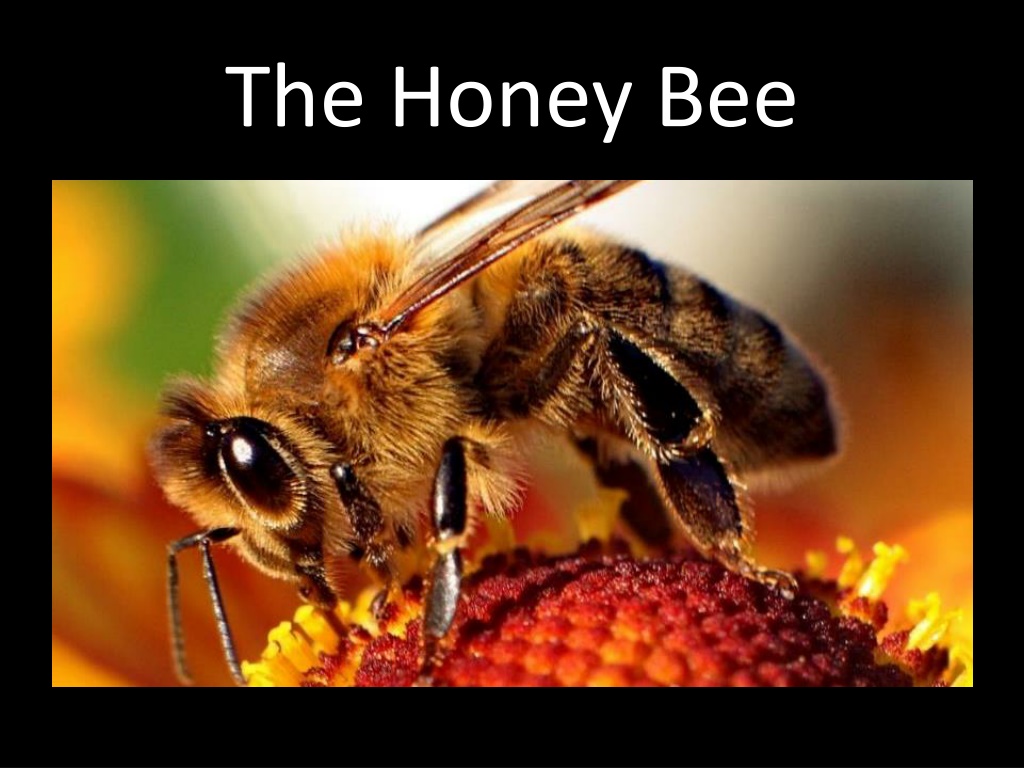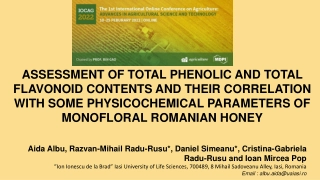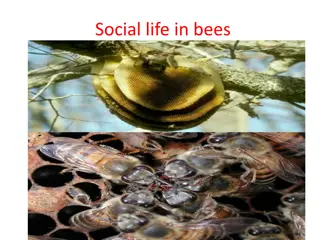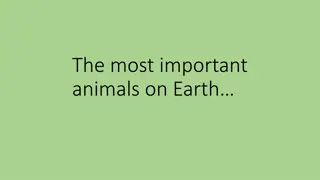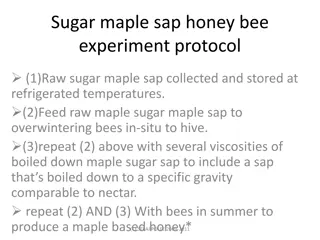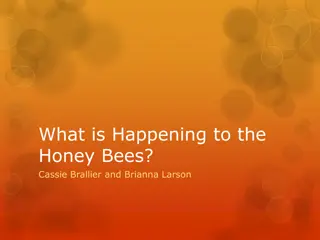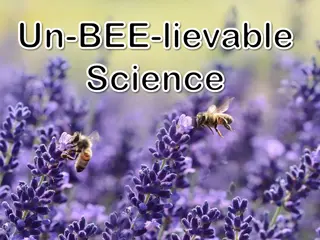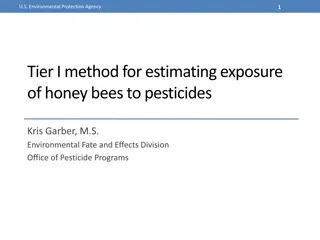Fascinating Facts About Honey Bees
Discover the incredible world of honey bees, including their three types or castes, body regions, unique features like compound and simple eyes, antennae, proboscis, and mandibles. Explore how their thorax enables flight with four wings, and learn about the speed and agility of these remarkable insects.
Download Presentation

Please find below an Image/Link to download the presentation.
The content on the website is provided AS IS for your information and personal use only. It may not be sold, licensed, or shared on other websites without obtaining consent from the author.If you encounter any issues during the download, it is possible that the publisher has removed the file from their server.
You are allowed to download the files provided on this website for personal or commercial use, subject to the condition that they are used lawfully. All files are the property of their respective owners.
The content on the website is provided AS IS for your information and personal use only. It may not be sold, licensed, or shared on other websites without obtaining consent from the author.
E N D
Presentation Transcript
There are 3 types, or castes, of honey bees. Drone Queen Worker Photo Credit USGS
Thorax thorax Abdomen Head A honey bee has 3 main body regions head, thorax, and abdomen. Photo Credit USGS
The worker bees head contains 2 compound eyes, 2 antennae, a pair of mandibles, and the proboscis. Photo credit USGS
The two compound eyes are made up of thousands of tiny lenses that allow the bee to see ultraviolet light, which is invisible to the human eye. Photo Credit USGS
The simple eyes each have a thick lens that can sense changes in brightness. A honey bee has three simple eyes on top of its head, but only one can be seen here. Photo Credit USGS
The honey bees antennae are movable feelers that detect smells and movement. Photo credit USGS
The proboscis is a straw-like tongue used to suck nectar or honey. Photo Credit Dalantech
Mandibles are a pair of jaw-like structures used to knead wax, chew honey and pollen, and bite tiny invaders when defending the hive. Photo credit USGS
The thorax is the honey bees middle region containing the flight muscles, 4 wings, and 6 legs. Photo credit USGS
Forewing Hind Wing A honey bee has 2 hind wings and 2 forewings. Its wings beat 250 times a second allowing the bee to fly at speeds of up to 15 miles per hour. Photo Credit USGS
A honey bee has 3 pairs of segmented legs used for walking, dusting their antennae, brushing pollen off body hairs, and storing pollen. Photo Credit USGS
The hind legs of a worker bee contain a pollen basket a collection of hairs where pollen is stored for transport.
The abdomen is the honey bees rear region that contains organs for digestion, reproduction, and respiration as well as the worker and queen bees stingers and the worker s wax glands. Photo Credit USGS
The stinger is only found in female honey bees. A worker bee s barbed stinger is used for defense. A queen bee s smooth stinger is used for eliminating rival queens. Photo Credit Max Westby
The honey sac is an internal, stomach-like organ where nectar is stored. Photo Credit USGS
Wax glands are located on the underside of the worker bee s abdomen. The glands form and excrete wax.
A honey bee has 4 distinct life stages egg, larva, pupa, and adult. The queen lays each egg into a different cell of the honeycomb.
After 3 days, the egg hatches, and a worm-like creature, called a larva, crawls out. Worker bees feed the larva royal jelly. As it grows, the larva sheds its skin 4-5 times. On day 9, the larva spins itself into a cocoon, and a worker bee seals the cocoon into the cell with wax.
Inside the cocoon, the larva transforms into a pupa, developing eyes, legs, and wings.
When the bee is fully grown, it chews its way out of the cell and emerges as an adult. Photo Credit Max Westby
